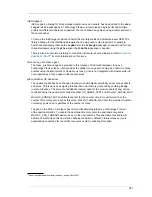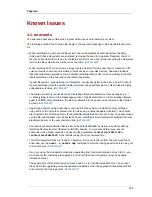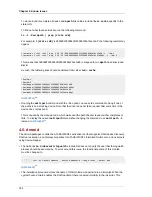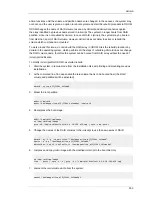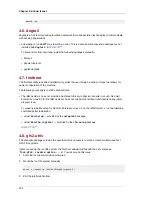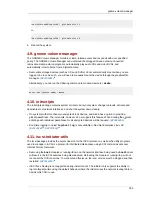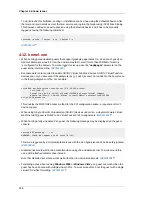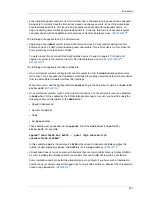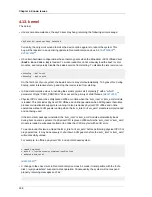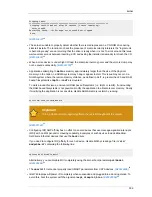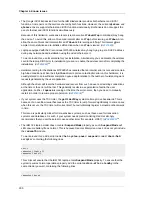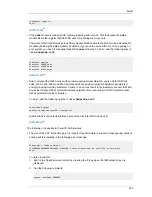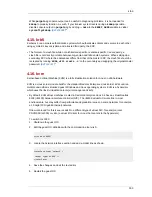
Chapter 4.
289
Known Issues
4.1. anaconda
The anaconda package contains the program which was used to install your system.
The following are the Known Issues that apply to the anaconda package in Red Hat Enterprise Linux
5.4
• When installing to an ext3 or ext4 file system, anaconda disables periodic filesystem checking.
Unlike ext2, these filesystems are journaled, removing the need for a periodic filesystem check. In
the rare cases where there is an error detected at runtime or an error while recovering the filesystem
journal, the file system check will be run at boot time.
(BZ#513480)
1
• When installing KVM or Xen guests, always create a partition for the guest disk, or create an LVM
volume. Guests should not be installed to block devices or raw disk devices. Anaconda includes
disk label duplication avoidance code, but when installing within a VM, it has no visibility to the disk
labels elsewhere on the host and cannot detect duplicates.
If guest filesystems, especially the root filesystem, are directly visible to the host, a host OS reboot
may inadvertantly parse the partition table and mount the guest filesystems. This can lead to highly
undesirable outcomes.
(BZ#518461)
2
• The minimum memory requirement when installing all Red Hat Enterprise Linux packages (i.e. '*'
or '@everything' is listed in the %packages section of the kickstart file) on a fully virtualized Itanium
guest is 768MB. After installation, the memory allocated to the guest can be lowered to the desired
amount.
(BZ#507891)
3
• Upgrading a system using Anaconda is not possible if the system is installed on disks attached
using zFCP or iSCSI (unless booted from the disk using a network adaptor with iBFT). Such disks
are activated after Anaconda scans for upgradable installations and are not found. To update please
use the Red Hat Network with the hosted Web user interface, a Red Hat Network Satellite, the local
graphical Updater, or the yum command line.
(BZ#494033)
4
• Anaconda's graphical installer fails to start at the default 800x600 resolution on systems utilizing
Intel Graphics Device Next Generation (IGDNG) devices. To work around this issue, ensure
anaconda uses a higher resolution by passing the parameters
resolution=1024x768
or
resolution=1280x1024
" to the installer using the boot command line.
• The NFS default for RHEL5 is "locking". Therefore, to mount nfs shares from the %post section of
anaconda, use the
mount -o nolock,udp
command to start the locking daemon before using nfs
to mount shares.
(BZ#426053)
5
• If you are using the Virtualized kernel when upgrading from Red Hat Enterprise Linux 5 to 5.2, you
must reboot after completing the upgrade. You should then boot the system using the updated
Virtualized kernel.
The hypervisors of Red Hat Enterprise Linux 5 and 5.2 are not ABI-compatible. If you do not boot
the system after upgrading using the updated Virtualized kernel, the upgraded Virtualization RPMs
will not match the running kernel.
(BZ#251669)
6
Summary of Contents for ENTERPRISE 5.4 RELEASE NOTES
Page 1: ...Red Hat Enterprise Linux 5 4 Technical Notes Every Change to Every Package ...
Page 18: ...xviii ...
Page 306: ...288 ...
Page 464: ...446 ...
Page 466: ...448 ...













